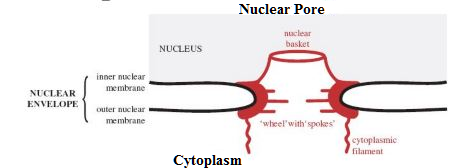|
|
|
Medical Pharmacology Chapter 36: Antiviral Drugs
Viral Gene Expression and Viral Replication:
Following release of viral nucleoprotein into the cytoplasm, the viral genetic information must be transported to the site for both expression and replication.1
The production of new, infectious virus requires several steps.
Firstly, specific proteins are required to support nucleic acid replication.
Secondly, structural proteins must be synthesized.
Lastly, viral nucleic acid and viral proteins must be assembled into new virus particles.1
Early viral genes promote viral genome replication.4
All RNA viruses (the exception being retroviruses) are required to synthesize an RNA-dependent RNA polymerase for genomic replication.4
This requirement follows from the lack of this polymerase in the host cell.
Other early proteins in combination with cellular proteins create RNA replication complexes within the cell, often associated with cellular membranes.
In the case of DNA viruses, their early proteins promote production of cellular enzymes that both facilitate DNA synthesis and facilitate synthesis of deoxyribonucleoside triphosphates.4
Early viral proteins interact with cell signaling systems, resulting in cellular transitioning to the DNA synthesis (S) phase.
Smaller DNA viruses utilize host cell DNA polymerases for genomic replication; whereas larger DNA viruses may code for their own DNA polymerase as well as other enzymes required in DNA replication.4
![]() As a result
of these modifications, large numbers of viral genomes (tens to tens of
thousands) copies can be made in each cell.4
As a result
of these modifications, large numbers of viral genomes (tens to tens of
thousands) copies can be made in each cell.4
mRNAs4
Viruses may also synthesize a set of "late" mRNAs after genomic replication has been initiated. Transition between "early" and "late" mRNA synthesis may be important in describing gene expression control in the host cell.
Packaging4
The packaging of viral genomes and capsid assembly require structural proteins which may be the most numerous viral proteins in an infected host cell.
As noted earlier, viral capsids can involve only one type or numerous capsid protein types.
Viral Release4
Release of mature animal viruses proceed by way of various pathways.
In some cases viruses accumulate within the host cell being released following cell death.
Some viral proteins inhibits cell death, thus increasing time available for viral replication; whereas, other viral proteins facilitate host cell death promoting viral release.
Envelope viruses are released following budding at the plasma membrane sometimes with limited effect on the host cell.4
Differing approaches are employed by different viruses.1
For example, most DNA viruses replicate viral nucleic acids first and then assemble into nucleocapsid complexes in the cell nucleus.
|
|
|
The transport of nucleocapsids to the nuclear membrane utilizes microtubules, which are cytoskeletal proteins acting not only as cellular support but also as tracks for material transport to particular cellular regions.2
Microtubules are described as hollow cylinders composed of α- and β-tubulin proteins.2
Ends of each microtubule are described as plus and minus. In animal cells plus ends are localized close to the plasma membrane and the minus sends are attached to a structure called the centrosome also known as a microtubule organizing center near the nucleus.
Motor proteins move themselves along with "cargo" along the microtubules and a variety of viruses including adenoviruses, parvoviruses, retroviruses and herpesviruses utilize the system to take their nucleocapsid (or derivative structure) from the cytoplasmic periphery to a location near the nucleus.2
|
|
|
The nuclear envelope is described by two membranes each of which contains a lipid bilayer.2
Furthermore, the nuclear envelope has nuclear pores which act as "gatekeepers" thus controlling material transport into and out of the nucleus.
Nuclear pores are formed from a complex of about 30 proteins which are assembled into structures including a "basket-like" structure extending into the nucleus and eight filaments extending into the cytoplasm.
At the pore center is a channel allowing diffusion and most molecules and particles move through this region complexed with special carrier proteins called importins and exportins.
![]() The smaller virion nucleocapsids
(e.g. parvovirus virion) can pass through the core but
larger viruses must either form slimmer structures or uncoat
at the nuclear pore.2
The smaller virion nucleocapsids
(e.g. parvovirus virion) can pass through the core but
larger viruses must either form slimmer structures or uncoat
at the nuclear pore.2
 |
|
By contrast, most RNA viruses (excepting influenza viruse) exhibit nucleic acid transcription, replication and then assembly while entirely localized in the cytoplasm.
Accordingly, DNA versus RNA of viral replication approaches are often considered separately.
Furthermore, positive-strand and negative-strand RNA viruses are also approached separately.1
|
|
This Web-based pharmacology and disease-based integrated teaching site is based on reference materials, that are believed reliable and consistent with standards accepted at the time of development. Possibility of human error and on-going research and development in medical sciences do not allow assurance that the information contained herein is in every respect accurate or complete. Users should confirm the information contained herein with other sources. This site should only be considered as a teaching aid for undergraduate and graduate biomedical education and is intended only as a teaching site. Information contained here should not be used for patient management and should not be used as a substitute for consultation with practicing medical professionals. Users of this website should check the product information sheet included in the package of any drug they plan to administer to be certain that the information contained in this site is accurate and that changes have not been made in the recommended dose or in the contraindications for administration. Advertisements that appear on this site are not reviewed for content accuracy and it is the responsibility of users of this website to make individual assessments concerning this information. Medical or other information thus obtained should not be used as a substitute for consultation with practicing medical or scientific or other professionals. |